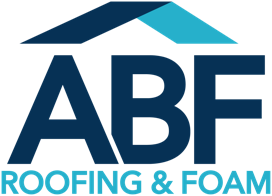Roof maintenance is crucial for ensuring your home’s protection and structural integrity. One significant aspect of roof maintenance is replacing damaged or deteriorated plywood decking. If you’re wondering, “How much does it typically cost to replace the plywood on my roof?” you’re not alone. In this blog post, we’ll explore roofing costs and provide insights into what you can expect when it comes to replacing roof plywood.
Factors Influencing Roof Plywood Replacement Costs
Several factors impact the cost of replacing plywood on your roof. Understanding these factors can help you budget for your roofing project more effectively:
1. Roof Size and Complexity:
The size and complexity of your roof are primary cost drivers. Larger roofs require more plywood sheets, while roofs with intricate designs, multiple angles, or steep slopes may require additional labor and time.
2. Plywood Material:
The type and quality of plywood you choose affect costs. Plywood comes in various grades and thicknesses, with higher-quality options typically costing more. Be sure to select plywood that meets local building code requirements and provides adequate structural support.
3. Removal of Existing Plywood:
If your current plywood is damaged and requires replacement, the cost includes labor and disposal fees for removing the old material. The condition of existing plywood can impact this cost.
4. Labor Costs:
Labor expenses for plywood replacement vary by location, roofing contractor, and project complexity. Labor typically includes removing old plywood, installing new sheets, and addressing any necessary roof structure repairs.
5. Roofing Material and Finish:
Once plywood is replaced, you’ll need to install roofing materials (e.g., shingles, tiles, or metal roofing). Material costs and your choice of roofing finish influence the overall project cost.
6. Roof Accessibility:
Difficult-to-reach roofs due to height or steepness can raise labor costs. Specialized equipment or safety measures may be necessary, adding to expenses.
7. Geographic Location:
Your location affects roofing costs. Labor rates, material prices, and permitting requirements can vary significantly by region.
8. Additional Repairs:
Roofing contractors may discover additional issues during the replacement, such as damaged rafters or sheathing. Addressing these repairs adds to the project’s overall cost but is essential for roof integrity.
9. Permits and Inspections:
Securing permits and scheduling inspections may involve additional fees, depending on local building regulations.
10. Warranty and Guarantees:
Some roofing contractors offer warranties or guarantees on their work. While this provides peace of mind, it may impact overall costs.
Conclusion
Replacing plywood on your roof is a necessary investment in your home’s long-term protection and structural soundness. The cost of this project varies based on factors such as roof size, material choices, labor rates, and location. To obtain an accurate estimate for replacing your roof plywood, consult with reputable roofing contractors in your area. They can assess your roof’s condition, provide a detailed cost estimate, and ensure that your roofing project stays within budget. How much does it typically cost to replace the plywood on my roof? Get an estimate today!!

